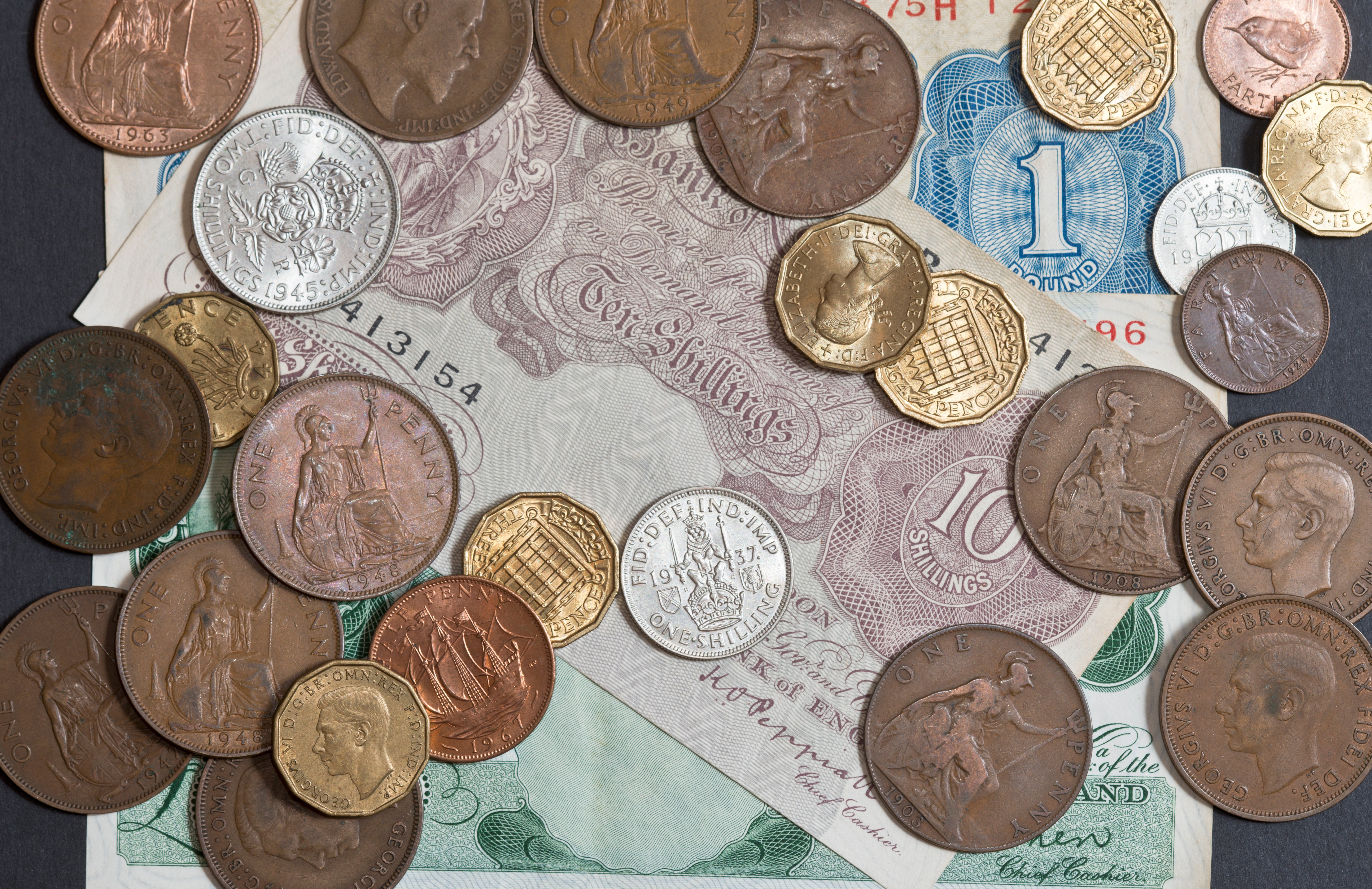What is Decimal Day and when did decimalisation start in England?
Fifty years ago today, we bid farewell to tanners, shillings and florins

Monday 15 February marks 50 years since Decimal Day, when the UK first switched its currency to a system that uses units of 10.
The change marked a complete shift in the way currency was understood and became the modern way to pay.
MP Sir John Bowring had previously told the House of Commons: “Every man who looked at his 10 fingers saw an argument for its use, and an evidence of its practicability.” But what did it really mean?
What was decimalisation?
Before 15 February 1971, a pound was made up of 20 shillings, and shillings were equivalent to 12 pence. This meant a pound was made up of a huge 240 pence in total.
Decimalisation meant the currency would now be based on the simpler multiples of 10 and 100.
The old system had been in place for hundreds of years, so to give people a chance to get used to the new system, some of the new decimal coins were introduced in 1968, a few years before the full rollout.
Why did decimalisation take so long?
The country had been considering changing the way currency worked for around 150 years, with other countries having already adopted decimalisation.
Part of the reason that the process took so long was that Parliament kept voting down proposals for the change.
Eventually, in 1960, the government was convinced by a report by the British Association for the Advancement of Science and the Association of British Chambers of Commerce.
As a result of this and the success of South Africa’s switch to a decimal system, ministers created a committee to look into changing the UK’s currency.
In 1961, senior civil servant Noel Moore was appointed secretary of the Committee of Inquiry on Decimal Currency.
Following big debates about the merits of introducing a new decimal system versus keeping the existing one, the pound system came to be selected, largely for political reasons.
The Chancellor of the Exchequer, James Callaghan, announced Labour’s decision to go ahead with proposals to decimalise in 1966, and Moore was appointed Secretary of the Decimal Currency Board.
What happened on Decimal Day?
The new decimal pound sterling received final approval in 1969, and the full switch-over took place on 15 February 1971 on what was known as ‘D Day’.
To help people understand how much the new coins were worth, shops displayed their prices in both decimal and non-decimal figures. After D Day, the prices were switched around so that the cost was shown first in new money.
To mark today’s half-centenary, the Royal Mint has released a special celebratory 50 pence piece.
Text on the coin reads “1971 decimal day” and is flanked by images of pre-decimalisation coins including halfpennies and shillings.
The coin can be purchased on the Royal Mint website and prices range from £10 for the coin in a fold-out wallet to £1,540 for a gold proof version and copy of the Mirror newspaper from 1971, which tells the story of decimalisation.
Subscribe to Independent Premium to bookmark this article
Want to bookmark your favourite articles and stories to read or reference later? Start your Independent Premium subscription today.

Join our commenting forum
Join thought-provoking conversations, follow other Independent readers and see their replies